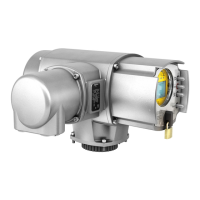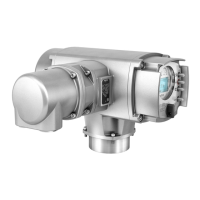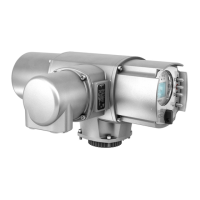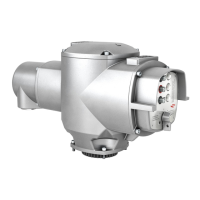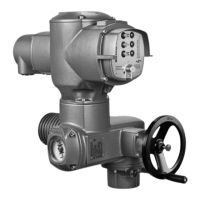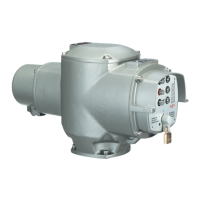
Do you have a question about the AUMA AC 01.2 and is the answer not in the manual?
| Brand | AUMA |
|---|---|
| Model | AC 01.2 |
| Category | Control Unit |
| Language | English |
Ensures legal requirements, directives, and national regulations are met for assembly, electrical connection, commissioning, and operation.
Highlights safety-relevant procedures marked with signal words like DANGER, WARNING, CAUTION, and NOTICE.
Introduces AC 01.2/ACExC 01.2 actuator controls for operating AUMA actuators with various interfaces.
Describes how to operate the actuator using local push buttons and the selector switch.
Explains remote operation via fieldbus interface, covering OPEN-CLOSE and setpoint control modes.
Explains user levels, password entry, password changes, and timeouts for unauthorized access.
Explains status bar, navigation support, and feedback signals like valve position and torque.
Details assignment and coding of digital outputs for status signals like end positions and faults.
Covers assignment, signal range, and adjustment of analogue outputs for travel, torque, or speed.
Explains control via local push buttons and properties of push-to-run or self-retaining local operation.
Details remote control via parallel interface or fieldbus, including OPEN-CLOSE and setpoint control.
Covers EMERGENCY, EMERGENCY stop, Disabled, and Service operation modes.
Covers setting the type of seating (limit or torque) for end positions OPEN and CLOSED.
Explains torque switching functions for overload protection and tripping in end positions.
Details limit switching for tripping in end positions and signalling end positions.
Defines up to 8 intermediate positions, their signal behaviour, and hysteresis settings.
Details positioner activation, adaptive behaviour, overrun, max error, dead time, hysteresis, and tolerances.
Covers process controller activation, modulating behaviour (P, PI, PID), setpoint source, and failure behaviour.
Prevents impermissible operation states by defining an off-time between opposite direction commands.
Defines actuator reaction to loss or defective signals, impacting operation modes Remote, Local, or Off.
Determines actuator behaviour in emergency situations, initiated by an EMERGENCY signal.
Allows control signals to prioritize REMOTE control over local controls, irrespective of selector switch position.
Interrupts power supply in emergencies via an EMERGENCY stop button, resetting operation commands.
Tests actuator and control function by partial opening/closing within a defined time.
Monitors valve overload protection against excessive torques and provides torque warnings.
Protects against overheating by monitoring PTC thermistors or thermoswitches in motor winding.
Checks if the actuator moves after receiving a command, issuing warnings or faults if no reaction.
Describes the multiport valve function, allowing direct access to valve ports without stopping at others.
Covers direct operation to positions via fieldbus commands or digital inputs.
Describes firmware update methods via Bluetooth or SD card for new functions or corrective actions.
Provides diagnostics for potentiometers, RWG, and MWG position transmitters.
Monitors parameters affecting actuator wear, triggering maintenance signals and allowing interval configuration.
Explains fault (red backlight) and warning (white backlight) indications and their remedies.




